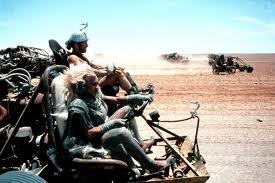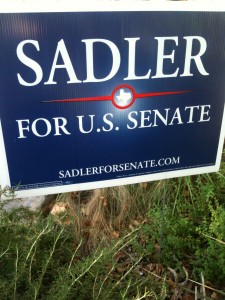Podcast: Play in new window | Download
 This audio interview is a continuation of an earlier interview with Shirley, in which we talked about her pawn shop, and the customer service they offer that banks rarely offer.
This audio interview is a continuation of an earlier interview with Shirley, in which we talked about her pawn shop, and the customer service they offer that banks rarely offer.
In this portion of the interview Shirley and I talked about serving the traditionally Hispanic West Side of San Antonio, and the barriers to trying to build something new and beautiful on the West side. The barriers come from the neighborhood, city government, and even from within.
Shirley: My name is Shirley, and I’m a long-time pawn-shop owner.
Michael: Thanks for joining me on Bankers Anonymous, Shirley. I really appreciate it.
I had a conversation with my friend Shirley, whose family has run a pawn shop on the West Side of San Antonio for 50 years. In the course of the discussion I learned about the type of customer she serves, who typically is under-served by the traditional banking sector.
I learned something else though, about the challenges of trying to get ahead in the world, if you come from the West Side of San Antonio and try to do something good in that area.
Michael: Who is your ideal customer or regular customer that you depend on?
Shirley: The average customer that comes into a pawnshop is a woman in her mid-thirties. She is usually a single mom. She’s working. Usually she might bring in something like a television and we would lend a hundred dollars. She would then within thirty days come and pay 120 dollars and redeem that item.
Seventy percent of the time, a customer does come back and pick up their merchandise. It’s a short-term collateralized loan where the person has sufficient — usually the person has every intention of coming back and getting their merchandise. That’s how it’s designed to work. If they don’t, there’s no recourse. We are non-recourse lenders. A person doesn’t have to pay the loan back. We don’t call them. We don’t notify them. We do occasionally send reminders but nothing that forces them to come back and get the item.
Michael: You and I live in the same city. We live in a Hispanic-dominant city. I know you’re located on the side of the city that traditionally is Hispanic. Would you say most of your customers are Hispanic origin? Do they speak Spanish at home, or are they just of origin and it was great-granddad from three generations ago move to that area of town? Do you know that demographic?
Shirley: Demographically it’s ninety percent Hispanic. We do require all our employees to speak Spanish so they can communicate well with the customers. I would say at least half of the customers are Spanish-speaking only. We communicate back and forth between English and Spanish all day long.
So the majority of people are Spanish-speaking, and what’s the most important part for us is that our employees can communicate with them and explain the lending process to them, so that they understand what the transaction is and what they’re getting into and what their recourse is if they don’t — well, there’s no recourse if they don’t pick it up, but explain that whole process to them.
Michael: Do you have a sense that your customers are also going into a bank and they’ve just preferred to do this, or would you say most of your customers never — pretty much never set foot into a traditional bank?
Shirley: Most of the customers don’t step foot into a traditional bank. I also feel like not just our customers, but my employees don’t want to go to a traditional bank. Recently when we tried to change the way we do our payroll, the employees didn’t want to go to a bank either. It seems like traditional banking as we know it may not be what a younger generation or a more recent immigrant generation of people want — how they want to deal with their money.
The market that we serve daily, and we know, we understand the pressures that people are facing just to make ends meet. I think the larger community doesn’t really understand that there’s a whole segment of our population that really is paycheck-to-paycheck, and a weekly paycheck-to-paycheck.
They can’t guarantee that they’re going to get work every single week consistently month-after-month. All these people still have the same needs that all of us have. They just don’t have the same access to credit cards. They don’t have necessarily people to ask to bail them out because most of their families are in the same situation.
There is a sense that there’s a large group of people that get left out of traditional financial services, whether they’re credit cards, whether they’re banks, whether they’re equity loans or even just regular every day, consistent payroll. We’re filling that gap. The pawn industry feels like we’re filling that gap, and we do absolutely no harm to people.
I’m very proud of being able to provide that service to a very large group of people that often get left out. I think that our industry does it clearly and fairly, without doing any harm.
I quickly came to understand an irony of Shirley serving the underserved and unbanked of San Antonio’s West Side with her pawn shop. Because when she had a vision for developing her entire city block, she found barriers on all sides, from the City, from the banks, and even from within. I’ll let her tell her story.
Michael: Can you tell me about the scope of the project that you have in mind that you either are going to do or have wanted to do for a long time? What does it mean, the project you’re trying to do?
Shirley: We are working on a new building within our existing space, but we’re looking at a 10,000 square foot addition, about 5,000 square feet of retail space and about 5,000 square feet of warehouse. It’s going to be a beautiful project here. We feel like we’re one of the only people that are here on the west-side of San Antonio that have done a private investment in the community in many, many years. It’s going to be a really beautiful project. We have a great architect who designed our building, and we’re working with every detail to make sure it’s something that the community can be proud of, that are many long-time customers can be proud of. It’s a whole new retail space, and a whole new building that I think is going to be the pride of the west side.
But barriers came from the City. A special IDZ, or Infill Development Zone, was supposed to make this type of project easier on the West Side, but in fact because of that it became somewhat of a nightmare.
Michael: It’s the Infill Development Zone that’s been hurting you also?
Shirley: It delayed us ten months.
Michael: In what way, what are they doing?
Shirley: We needed council approval for that and there was some concern that we were changing our — I think it’s possible that it was just a miscommunication with the councilman and our neighborhood association, that we were not changing our zoning. We continue to be in a “C2”. We just needed an overlay, an Infill Development Zone overlay to allow us the parking waiver.
Michael: So they create this special zone to help you but P.S., it’s actually another barrier to getting done what you need to get done.
Shirley: First of all, it was very complicated, so that I could not read it and understand it and go myself to council, or rather to the board of adjustments. I had to hire lawyers. I didn’t have to hire lawyers, I suppose I could have hired a consultant but it was complicated. It was very important to me because we’ve been here for fifty years and it was recommended to me to hire a lawyer to help get that passed. The lawyers were very expensive. Then I think unfortunately complicated the issue even further because once lawyers get involved it seems to be more complicated. They didn’t quite seem to understand that we were just asking for an Infill Development Zone.
Delays came not just from City Council and lawyers, but from her bank. This got Shirley to reflect on the financial barriers, the political barriers, and the barriers from within. But she’s still trying her best.
Shirley: Again, I’ve been hitting my head against the wall for two years and I can’t get it done. But I think that for a long time I thought it was me, because I’m not competent enough or strong enough, or I don’t have the qualities that are necessary to move this forward.
I think it’s possible that as a community we feel like “it must be me,” that I can’t get things done. But I think there’s a possibility that maybe in fact that’s not true. There are in fact these real barriers, so even just recognizing that there may be something that’s beyond myself, it’s not just me, that people that are working in these communities, that there are barriers. We have a bit of a hard time navigating them because at the same time this is what we know. But I think that by having our mayor speak the way he does, and having some of the other politicians come in and really working within this community, there starts a change. It’s slow-changing but even just recognizing that we have the power to make that change.
Without sounding too trite about it, I really do think it’s possible. It’s just a recognition that there is plenty of opportunity right here in this community. First of all recognize that it’s actually happening, but then move forward. I think the fact that everybody else is starting to recognize, the politicians are starting to recognize that we have a very powerful voice here.
Michael: I hope you get a beautiful new construction.
Shirley: I can’t wait. I’ll definitely do a big grand opening for everybody when the time comes.
Please Also See: Interview Part I: Pawn Shop Owner on the Unbanked
Also see: Video: Pawn Shop owner turns Politico!
Post read (2714) times.


